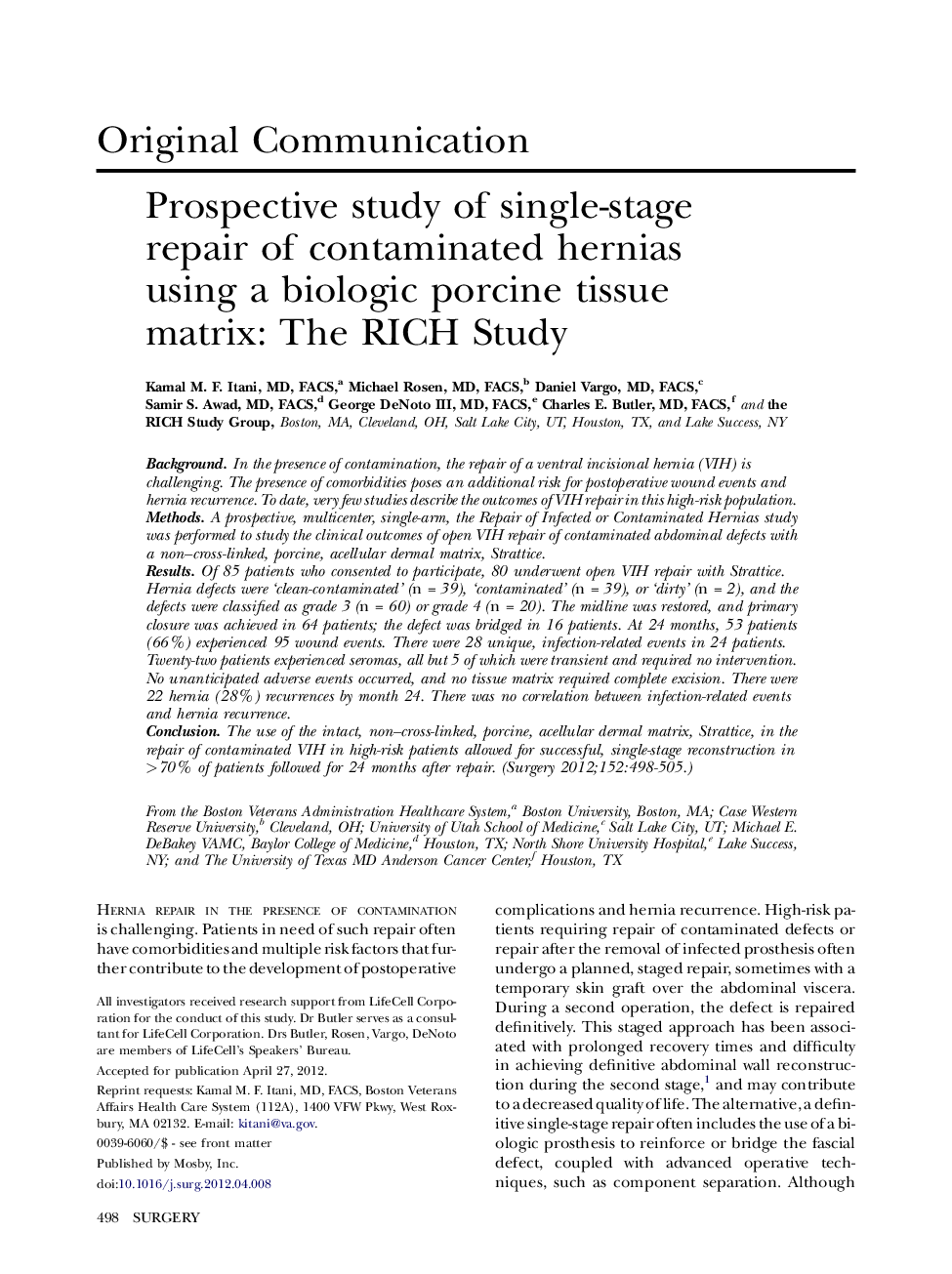| Article ID | Journal | Published Year | Pages | File Type |
|---|---|---|---|---|
| 4308372 | Surgery | 2012 | 8 Pages |
BackgroundIn the presence of contamination, the repair of a ventral incisional hernia (VIH) is challenging. The presence of comorbidities poses an additional risk for postoperative wound events and hernia recurrence. To date, very few studies describe the outcomes of VIH repair in this high-risk population.MethodsA prospective, multicenter, single-arm, the Repair of Infected or Contaminated Hernias study was performed to study the clinical outcomes of open VIH repair of contaminated abdominal defects with a non–cross-linked, porcine, acellular dermal matrix, Strattice.ResultsOf 85 patients who consented to participate, 80 underwent open VIH repair with Strattice. Hernia defects were ‘clean-contaminated’ (n = 39), ‘contaminated’ (n = 39), or ‘dirty’ (n = 2), and the defects were classified as grade 3 (n = 60) or grade 4 (n = 20). The midline was restored, and primary closure was achieved in 64 patients; the defect was bridged in 16 patients. At 24 months, 53 patients (66%) experienced 95 wound events. There were 28 unique, infection-related events in 24 patients. Twenty-two patients experienced seromas, all but 5 of which were transient and required no intervention. No unanticipated adverse events occurred, and no tissue matrix required complete excision. There were 22 hernia (28%) recurrences by month 24. There was no correlation between infection-related events and hernia recurrence.ConclusionThe use of the intact, non–cross-linked, porcine, acellular dermal matrix, Strattice, in the repair of contaminated VIH in high-risk patients allowed for successful, single-stage reconstruction in >70% of patients followed for 24 months after repair.
